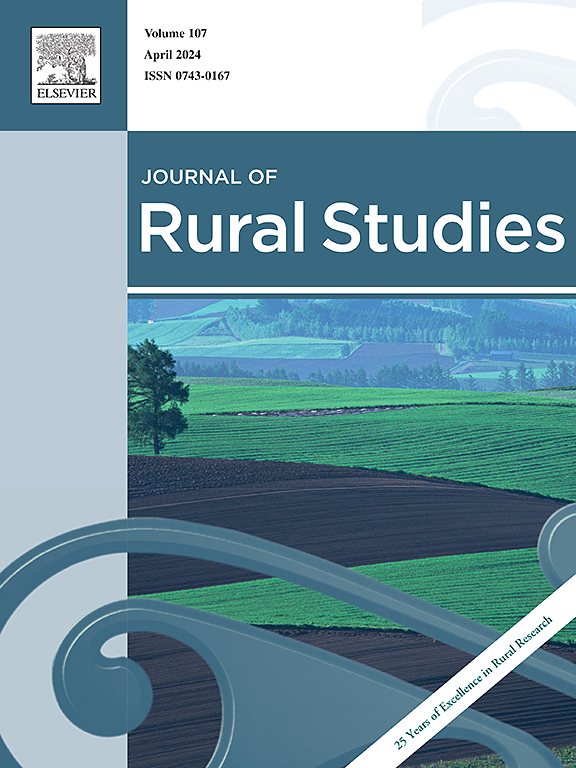Rebalancing healthcare utilization: Rural-urban health insurance integration and health-seeking behavior of rural residents in China
IF 5.1
1区 社会学
Q1 GEOGRAPHY
引用次数: 0
Abstract
The integration of urban-rural medical insurance in China aims to address healthcare disparities and improve rural medical protection. This paper evaluates the impact of the price shock due to this integration on rural residents' health-seeking behaviors. First, we establish an economic framework modeling a representative individual's medical choices based on medical prices and perceived quality. To empirically test this framework, we use four waves of the China Health and Retirement Longitudinal Study (2011–2018) and employ a multi-period DID model nested within a sample selection model. Findings indicate that the integration increases outpatient visits by 1.9 % and the likelihood of choosing primary healthcare centers (PHCs) for outpatient services by 7.2 %. This increase is driven by the targeted reimbursement for outpatient expenses exclusively at PHCs. Although hospitalization increases by 1.4 %, there is no significant change in the choice of inpatient institution, as out-of-pocket expenses for hospitalization are uniformly reduced across all levels of healthcare institutions after the integration. Heterogeneity analysis shows that younger, healthier, less-educated rural individuals and those from lower-income households are more likely to choose PHCs post-integration, with stronger effects in resource-limited cities. Further, this positive effect does not differ between chronic and non-chronic patients, even with extra insurance for chronic conditions post-integration. This study provides evidence that changes in cost-sharing effectively encourage rural patients to utilize primary care, especially outpatient services. Future policy optimization should focus on enhancing the capacity and quality of primary healthcare services to sustain these positive outcomes.
再平衡医疗保健利用:城乡医保整合与中国农村居民求医行为
中国的城乡医保一体化旨在解决医疗差距问题,提高农村医疗保障水平。本文评估了这一整合带来的价格冲击对农村居民就医行为的影响。首先,我们建立了一个基于医疗价格和感知质量的代表性个人医疗选择的经济框架。为了对这一框架进行实证检验,我们使用了中国健康与退休纵向研究(2011-2018)的四波数据,并在样本选择模型中嵌套了一个多期DID模型。研究结果表明,整合增加了1.9%的门诊访问量,选择初级卫生保健中心(PHCs)进行门诊服务的可能性增加了7.2%。这一增长是由专门在初级保健中心有针对性地报销门诊费用所推动的。虽然住院人数增加了1.4%,但住院机构的选择没有显著变化,因为在整合后,各级医疗机构的住院自付费用统一减少。异质性分析表明,更年轻、更健康、受教育程度较低的农村个体和来自低收入家庭的个体在整合后更有可能选择初级保健医院,在资源有限的城市中效果更强。此外,这种积极影响在慢性和非慢性患者之间没有差异,即使在整合后对慢性疾病有额外的保险。本研究提供的证据表明,成本分担的变化有效地鼓励农村患者利用初级保健,特别是门诊服务。未来的政策优化应侧重于提高初级卫生保健服务的能力和质量,以维持这些积极成果。
本文章由计算机程序翻译,如有差异,请以英文原文为准。
求助全文
约1分钟内获得全文
求助全文
来源期刊

Journal of Rural Studies
Multiple-
CiteScore
9.80
自引率
9.80%
发文量
286
期刊介绍:
The Journal of Rural Studies publishes research articles relating to such rural issues as society, demography, housing, employment, transport, services, land-use, recreation, agriculture and conservation. The focus is on those areas encompassing extensive land-use, with small-scale and diffuse settlement patterns and communities linked into the surrounding landscape and milieux. Particular emphasis will be given to aspects of planning policy and management. The journal is international and interdisciplinary in scope and content.
 求助内容:
求助内容: 应助结果提醒方式:
应助结果提醒方式:


